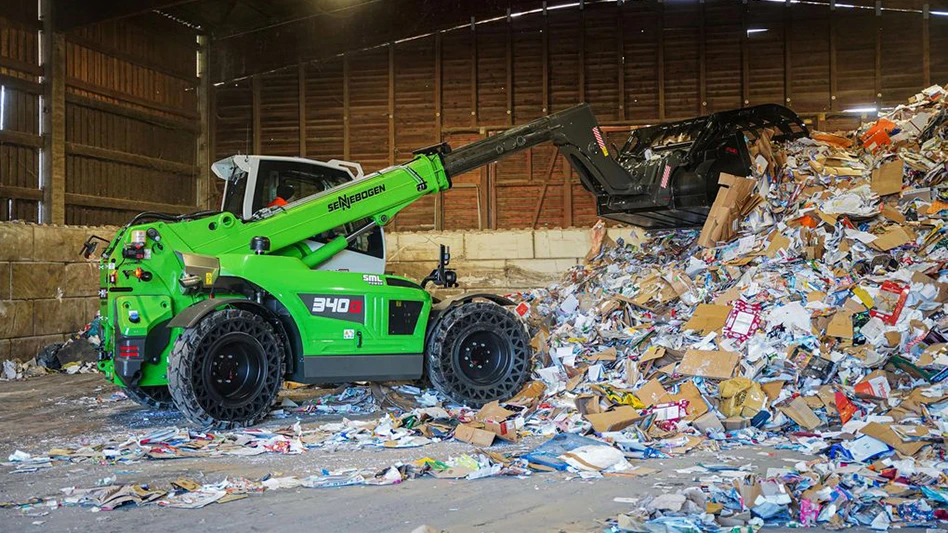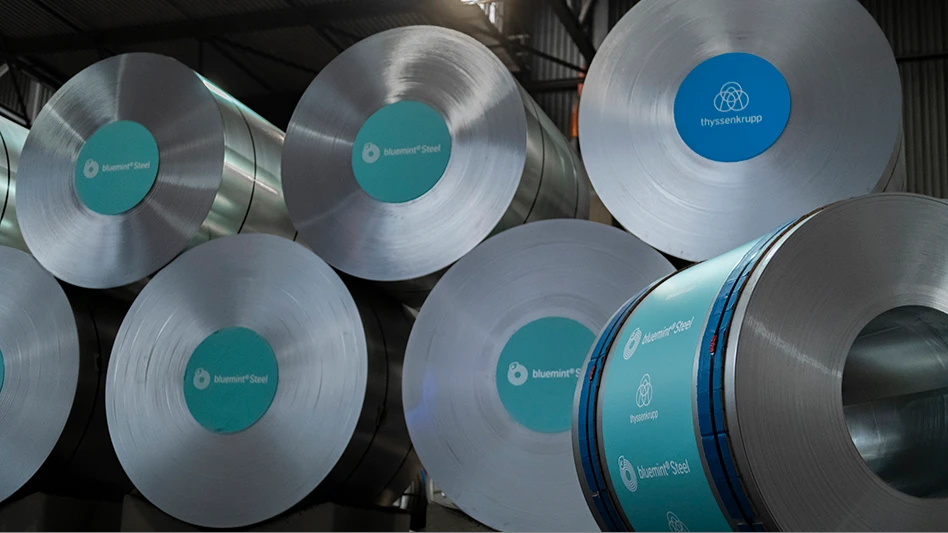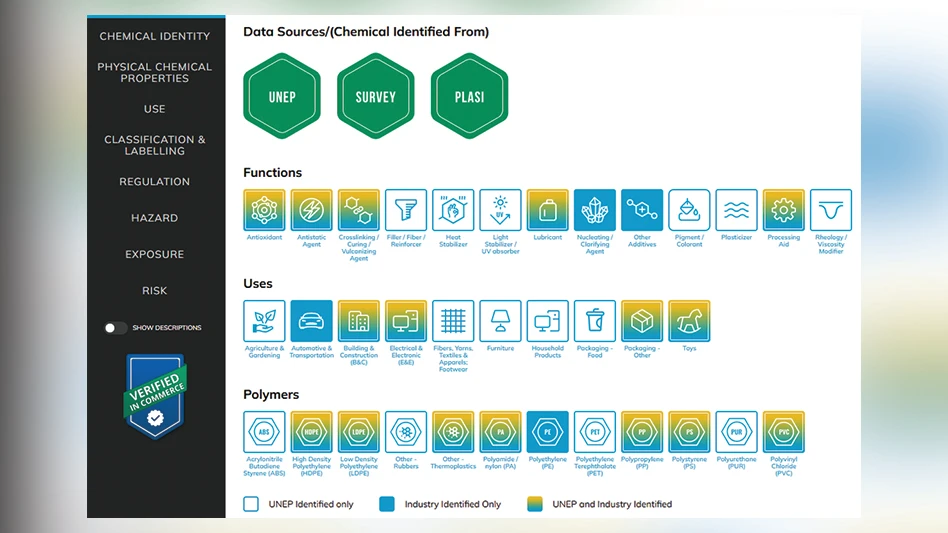 For decades, recycling organizations have strived to distinguish secondary commodities with value from waste—a word that implies something has no value whatsoever. A slogan often used by the Institute of Scrap Recycling Industries Inc. (ISRI), Washington, D.C., is simply, "Scrap is not waste."
For decades, recycling organizations have strived to distinguish secondary commodities with value from waste—a word that implies something has no value whatsoever. A slogan often used by the Institute of Scrap Recycling Industries Inc. (ISRI), Washington, D.C., is simply, "Scrap is not waste."
Sometimes there has been progress, with the Bureau of International Recycling (BIR), Brussels, having recently secured a nonwaste definition within the European Union for some scrap metals.
In the United States, though, ISRI and other trade groups are worried about new Environmental Protection Agency (EPA) language that seems to push scrap materials back toward a waste definition that recyclers thought they had left behind.
And government agencies within the world's largest consumer of scrap materials, China, also have been rewriting their definition of the word waste, recently causing havoc at port locations that receive large volumes of scrap.
Concern in the U.S.
At an ISRI Northern Ohio Chapter function near Cleveland in mid-October, ISRI Chairman John Sacco urged the more than 150 attendees to contact the U.S. EPA before Oct. 20 to express their concern over proposed rules that could have serious impacts on the scrap recycling industry. At issue is a proposed new EPA rule that attempts to extend regulations meant for hazardous waste recycling to the recycling of scrap metal, shredded computer boards and possibly other similar non-hazardous materials.
Displaying a sense of urgency, Sacco told attendees a form letter is available to members on the ISRI website (www.isri.org) as a starting point as they write to urge reconsideration of the EPA rule.
Sacco, who also is president of Sierra Recycling & Demolition Inc., Bakersfield, Calif., flew across the country to convey to the Northern Ohio Chapter attendees that if the proposed rule was finalized as currently written, business conditions for them could become much more difficult.
Scrap recyclers could expect from the proposed rule, at the least, a burdensome new layer of documentation and paperwork as well as the possibility of tighter government solid waste district control of recyclable materials, said Sacco.
Recyclers and consumers of recyclable materials such as scrap tires and scrap wood had already been contesting a set of proposed EPA rules on boiler operation that threaten to put those end markets into turmoil.
The latest Obama administration EPA rule change affecting recyclers was announced July 6, with an EPA news release stating, "The U.S. EPA is proposing new safeguards for recycling hazardous materials to protect public health and the environment. Today's proposal modifies EPA's 2008 Definition of Solid Waste (DSW) rule, which revised hazardous waste regulations to encourage recycling of hazardous materials. Today's proposal will improve accountability and oversight of hazardous materials recycling, while allowing for important flexibilities that will promote its economic and environmental benefits. EPA is opening up this proposal for public comment."
Published in the Federal Register on July 22, the EPA says it has proposed to "revise certain exclusions from the definition of solid waste for hazardous secondary materials intended for reclamation that would otherwise be regulated under Subtitle C of the Resource Conservation and Recovery Act (RCRA)."
In its news release, EPA says its proposal "includes provisions to [provide] increased transparency and oversight and accountability for hazardous materials recycling. Facilities that recycle on site or within the same company under the reduced regulatory requirements retained under the proposal would be subject to enhanced storage and recordkeeping requirements as compared to the 2008 rule. Companies that send their hazardous materials off site for recycling would have tailored storage standards while being required to send their materials to a permitted hazardous waste recycling facility. The proposed rule also creates a level playing field by requiring all forms of hazardous waste recycling to meet requirements designed to ensure materials are legitimately recycled and not being disposed of illegally."
Of concern to scrap recyclers is the potential breadth of the DSW rule as proposed. According to the rule as printed in the Federal Register, "Entities potentially affected by today's action include between 6,500 to 9,100 industrial facilities [in] upwards of 622 industries that generate or recycle hazardous secondary materials. Most of the 622 industries have relatively few counts of potentially affected entities [but] there are 27 industries with the largest counts of potentially affected entities."
Among the sectors on that list of 27, designated by NAICS (North American Industry Classification System) code, are iron and steel mills, NAICS code 331111; secondary smelting, refining and alloying of nonferrous metal (except copper, aluminum), NAICS code 331492; and plastics material and resin manufacturing, NAICS code 325211.
Totally ignored by the EPA, Sacco, said was the impact of the proposal on the scrap recycling industry. By ISRI's own estimates, the rule change could cost the industry $1.2 billion.
Resisting this new, broad definition of waste "is a big part of what we're about at ISRI right now," Sacco said. "It's real and it's upon us now."
Progress in the EU
While recyclers in America wrestle with a potential newly expanded definition of waste, scrap recyclers in the European Union have recorded some successes on the scrap versus waste definition front.
At the BIR 2011 World Recycling Convention in May in Singapore, Ian Hetherington of the British Metals Recycling Association was able to declare to attendees of the International Environment Council (IEC) meeting, "I want to provide you with some good news."
Hetherington said several weeks before the world body's 2011 convention, an agreement had been confirmed by the European Commission for end-of waste criteria for ferrous and aluminum scrap. "This is clearly to be welcomed," he said. "The nub of it is that there are some real commercial advantages emerging from end-of-waste [for these materials]."
Hetherington said these advantages include the elimination of "very substantial costs" associated with satisfying waste legislation and contradicting the negative image of "changing waste into waste." He added, "Scrap metal processors regain the right to be a recycler once again. This is a big change for our industry."
Similar end-of-waste provisions have been in development for copper scrap and recovered paper, Hetherington said.
For recyclables for which such criteria are to be developed, the emphasis is on purity of material shipped and avoiding adverse environmental or human health impacts. Recyclers and their customers could, thus, determine when they were selling or buying waste, he added.
Another speaker on the IEC agenda gave an outline of emerging recycling initiatives in China, including its Waste Electrical and Electronic Equipment (WEEE) Recycling Management Regulation implemented at the start of 2011.
China passed its own version of Europe's WEEE regulation because household obsolete electronics generation in China is expanding at an annual rate of 20 percent, said Ma Hongchang, vice secretary general of the China Nonferrous Metals Industry Association Recycling Metal Branch (CMRA).
China's Secondary Nonferrous Metals Industry Development Promotion Plan published earlier this year establishes a number of goals for the country's current Five-Year Plan, including a gross annual output target of 12 million metric tons of secondary nonferrous metals by 2015.
Slow(er) Boats to China
For China to reach its secondary nonferrous metals production goal, it will continue to require nonferrous scrap imported from the rest of the world.
In the past 12 years, China has welcomed increasingly larger amounts of all types of scrap. However, in the second half of 2011, scrap import levels at several Chinese ports are being dramatically curtailed in part because of yet another law or rule that seems to treat scrap as a type of waste.
A Wall Street Journal article in mid-October reported that copper scrap shipments were backlogged at ports in southern China's Guangdong province and perhaps in other parts of the country.
Sources contacted by the newspaper pointed to a Ministry of Environmental Protection regulation introduced in August 2011 requiring additional documentation and immediate inspection of imported scrap shipments.
On its website, shipping line ZIM Integrated Shipping Services Ltd., Haifa, Israel, notifies its customers that as of Aug. 1, 2011, "In order to confirm a booking of scrap material to China, the agent must:
- Request shipper to submit CCIC certificate of the cargo;
- Request shipper to submit shipper's AQSIQ number;
- Request shipper to submit China consignee's import license;
- Request shipper to submit China consignee's AQSIQ number;
- Understand that entering "To Order" as the consignee is not acceptable, as it must be the ultimate receiver of the goods; and
- Except for "waste paper," all other scrap material is not acceptable to [trans-ship] via one Chinese port to another Chinese port. The shipment must be cleared at the first Chinese port of entry."
ZIM adds, "Any violation will result in costly charges to return the cargo back to the shipper."
Recycling organizations continue to take steps to distinguish secondary commodities from waste in the eyes of government officials and regulators. Often, though, a step forward is soon contradicted with a step backwards.
The author is editorial director of Recycling Today and can be contacted at btaylor@gie.net.

Explore the November 2011 Issue
Check out more from this issue and find your next story to read.
Latest from Recycling Today
- Harsco brands slag-content asphalt as SteelPhalt
- ArcelorMittal puts French EAF conversions on hold
- Associations ask for effective EPR to drive textile circularity in Europe
- GESA report claims 72 countries recycled EPS in 2023
- Report: Saica exploring recycled paper mill project in Dayton, Ohio
- Hydro’s Alumetal to meet 15 percent of its energy demands through solar
- CSA Group publishes standard defining plastics recycling in Canada
- Second Cyclyx Circularity Center to be located near Fort Worth, Texas





